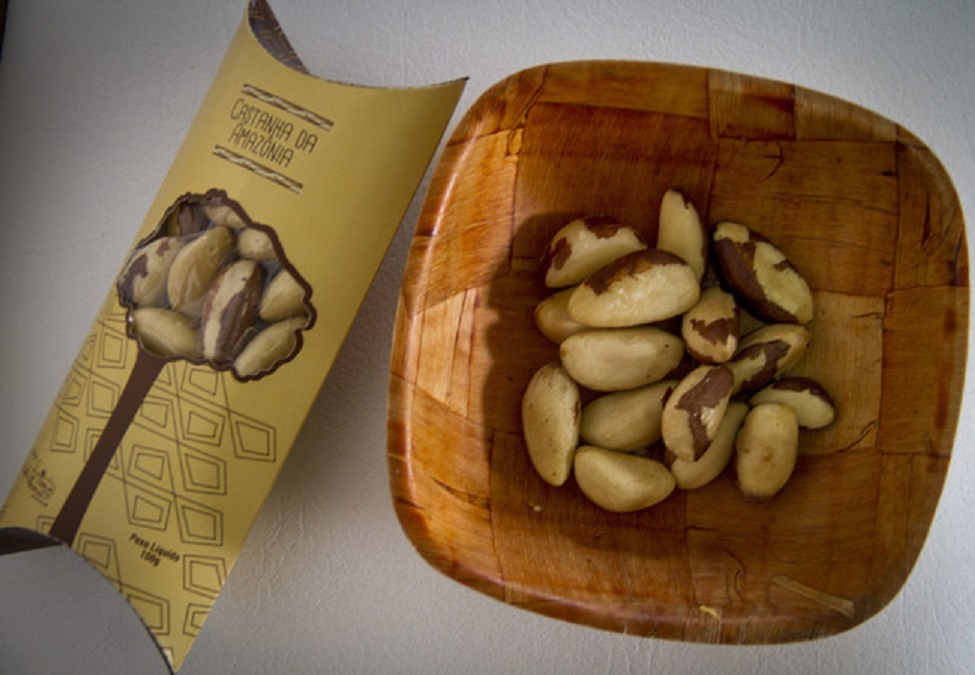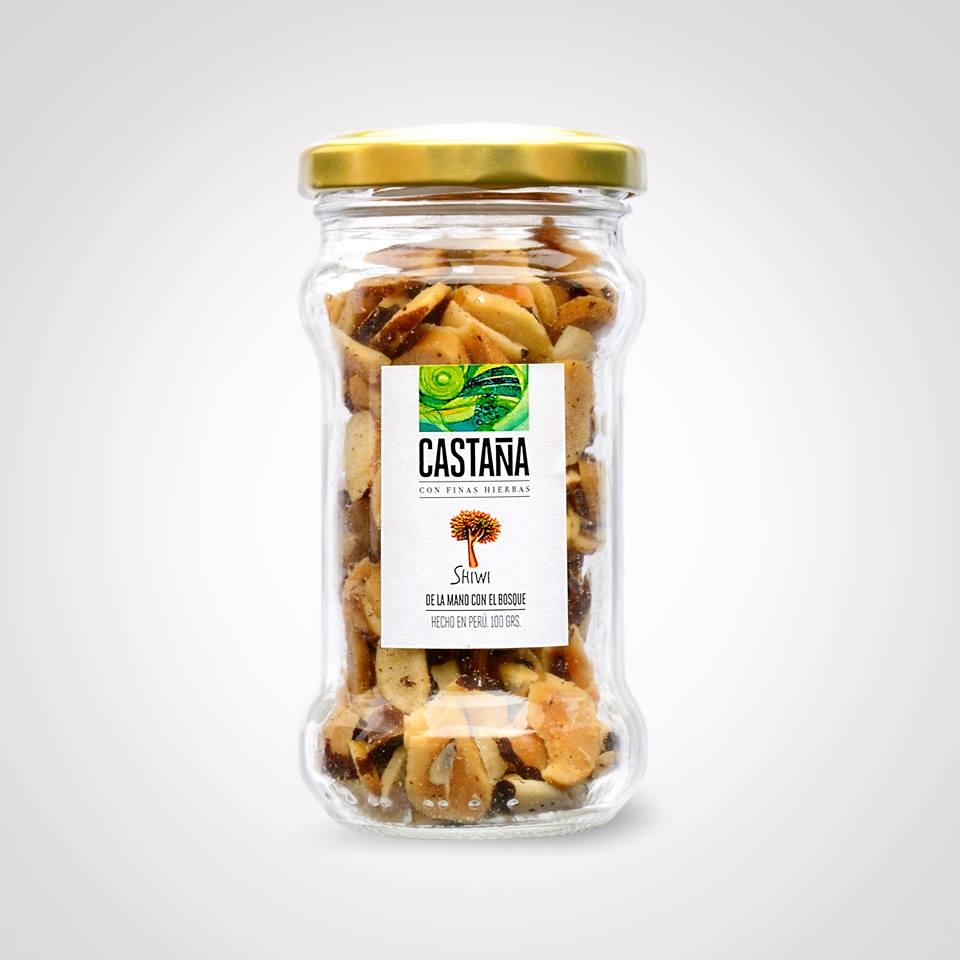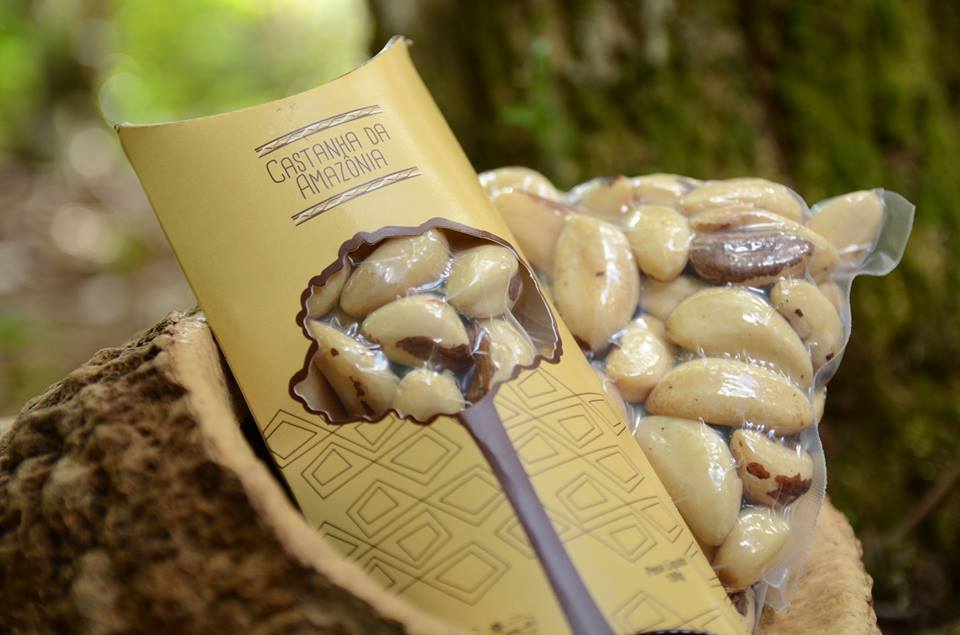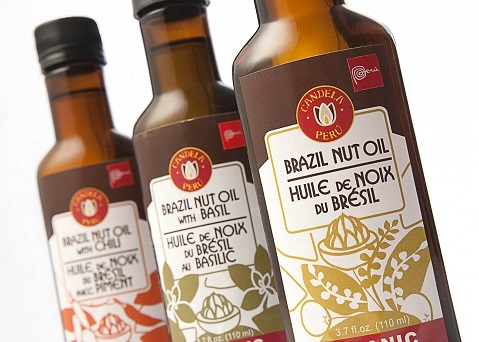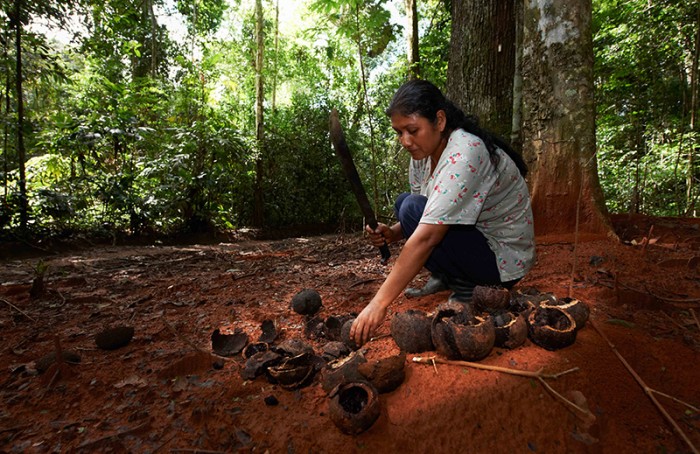By Jacob Olander
For years, the Brazil nut (Bertholletia excelsa) has been emblematic of the idea that we can conserve the Amazon rainforest by using its valuable products wisely. No other product of the Amazon rainforest generates as much revenue, for as many people – this nut can be an economic lifeline for forests. At Canopy Bridge we’ve been collaborating with the likes of Shiwi, a start-up bringing new nut-based products to market (granolas, butters, snacks and lip balms) and Amarakaeri, where Peruvian indigenous communities for the first time secured rights to sustainably harvest Brazil nuts within the rainforest reserve.
A recent published report from scientists at the Center for International Forestry Research (CIFOR) takes a look at how this paradigm of ‘conservation through use’ has played out for Brazil nuts over nearly 30 years. In 1988, the first large-scale cooperative of Brazil nut harvesters was established, the Cooperativa Agro-extrativista de Xapuri (CAEX). This was the same year that Chico Mendes, the Brazilian rubber tapper and environmental activist, was assassinated, leaving a legacy of global awareness for the plight of the rainforest and the concept of extractive reserves – areas set aside for local communities to maintain as working, income-generating forests, resilient to the pressures of encroaching cattle ranches.
The CIFOR analysis, by Manuel Guariguata, Peter Cronkleton, Amy Duchelle and Pieter Zuidema, and published in Biodiversity Conservation, highlights both how powerful a tool Brazil nut forests can be and their vulnerability in the face of a rapidly changing Amazon.
“Brazil nut extraction generates tens of millions of US dollars in annual export value in Brazil, Peru and Bolivia,” and employs thousands in those three countries, often in remote areas with limited alternative sources of income. The trees, towering up to 40 meters and living hundreds of years, provide figurative and literal shelter for biodiversity, local communities and are an important bulwark against climate change. “In Peru, Brazil nut concessions store, as a land use type, the largest aboveground carbon densities across the country.” Forests studded with 15-20 trees per hectare can generate enough economic value to make saving most of the other forest species worthwhile for local forest communities.
Overall, Brazil nut forests have made conservation work for many forest communities, but the Amazon is a dynamic and changing place. The authors highlight the complex nature of the system and some points of fragility:
– In places like Madre de Dios, Peru, many of the harvesters are getting older. The heavy, deep-forest work of Brazil nut harvest is not necessarily nearly as attractive to younger more urban-looking generations.
-In another example of generational changes in culture and expectations, “migration from remote areas (once almost entirely dependent on forest extractivism) to local urban centers in the Brazilian state of Amazonas appears to have been primarily driven by lack of access to education.” The authors argue that improving educational access and other services for forest communities may be crucial for motivating them to stay.
-While Brazil nut forests are “robust to conversion” and stay standing in the face of other land uses when roads and infrastructure are more remote, when these conditions change, new economic opportunities arise and household incomes diversify, income from nuts is often re-invested in non-forest activities, like cattle.
-And in another ironic negative feedback loop, hunting, though typically outlawed, is an important source of protein during the Brazil nut harvest season, in the process depleting populations of animals that contribute to seed dispersion, and the next generations of Brazil nut trees.
The solutions may lie with a combination of approaches. Legal protections for extractive reserves and indigenous territories, can keep deforestation at bay, with Brazil nut and other extractivist income helping to offset the cost.
Diversifying income from these Brazil-nut forests may also be part of the solution. Studies show that ecotourism and limited timber harvest can be compatible with Brazil nut yields, and in the case of careful forest management may actually stimulate more regeneration and growth of Brazil nut trees.
And finally, new markets have a role to play as well. The use of the vast majority of Brazil nuts traded in global commerce is still relatively unimaginative, mostly as a bulky, conveniently large element of mixed nuts. Brazil has a much broader array of finished products in its national market. The CIFOR report highlights that “Brazil nuts are a natural source of selenium. a mineral with antioxidant properties. They are also a good source of (unsaturated) fatty acids that help reduce coronary heart disease, while also being an alternative for those with gluten intolerance.”
More value from Brazil nuts translates into more potential value for communities safeguarding the forest, and a greater chance that vast areas of Amazon forest survive for future generations.
Check out some of our Brazil nut producers on Canopy Bridge, which include:
For additional material on the topic, click here to read a blog by Forest News.
